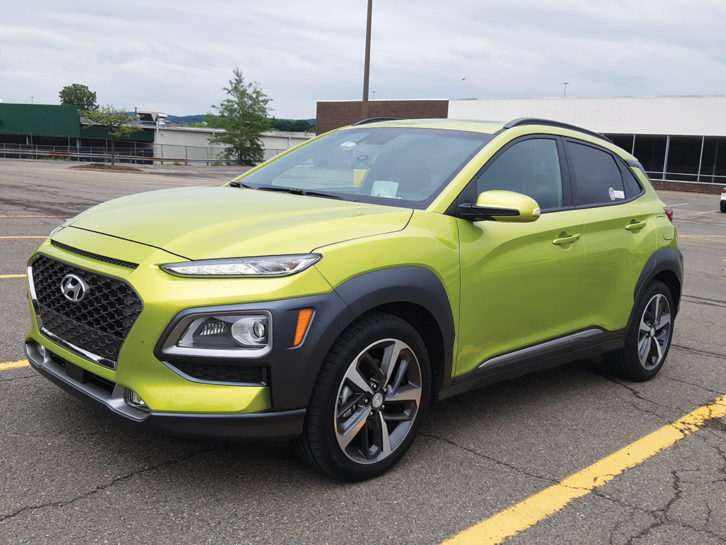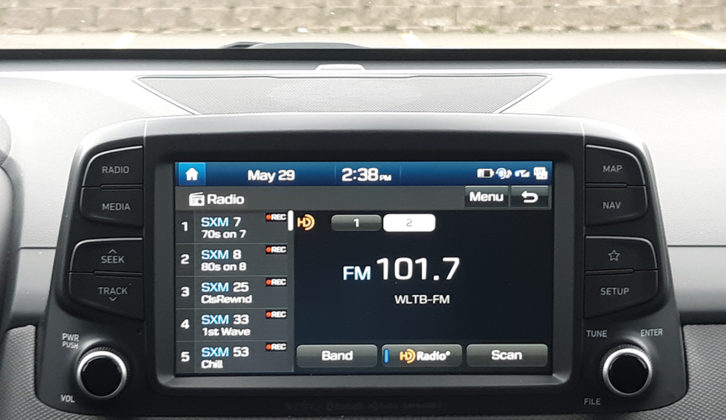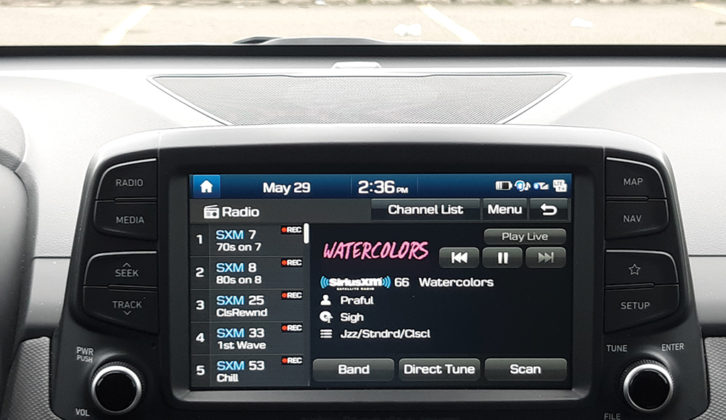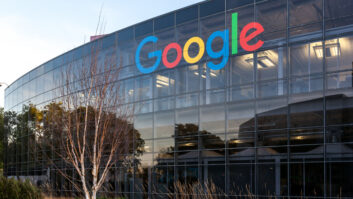
We wrote about Hyundai’s infotainment systems in November 2016. My recent test of the North American Utility Vehicle of the Year for 2019, Hyundai’s Kona, included its top-of-the-line infotainment system.
Pictures of the center stack of the dashboard show a simple interface used to access all the features. The user experience interface is simple by design.

Cason Grover is senior group manager, vehicle technology planning for Hyundai Motors America. He is responsible for the developments in multimedia infotainment audio, connected car (BlueLink) and active safety technical features.
When I asked him about the simplicity of the interface, he said, “Ultimately, we are all about ease of use; we don’t want to change things for the sake of change. We want to keep ease of use high, frustration low and keep as much familiarity as we can while continuing to adopt the latest features.”
That interface includes voice activation and control, touchscreens, buttons and knobs.
“Almost every vehicle on the road has some redundancy in terms of controls, by which I mean you have volume on the steering wheel, modes on the steering wheel and buttons or knobs or touch sliders for volume,” said Grover. “We’ve got a nice labeled radio button that will cycle through the bands and mixed presets.”
INSIDE AUDIO
Hyundai was the first manufacturer to incorporate Android Auto connectivity, in the 2015 Sonata, and in 2016 it added Apple CarPlay connections. HD Radio reception capability is standard on more than half of Hyundai’s models including those with navigation. Besides the multicast capability, Hyundai is using HD Radio as a data pipeline for traffic information.
Unlike some manufacturers that have deprecated or deleted AM radio reception in audio systems in hybrid or full electric vehicles, Hyundai offers AM radio reception as a standard feature. “We don’t have plans to change that in the near future,” Grover said.
In-car internet (Wi-Fi) is still being studied, but with no announcement on the horizon. As for native, preloaded apps like Spotify, Grover says streaming is best handled by the driver or passenger connecting their Android or Apple device, or streaming through Bluetooth connections.
One issue that’s important — to the National Highway Traffic Safety Administration and to car manufacturers — is that of driver distraction. Grover says Hyundai develops its interfaces based upon NHTSA guidelines and that the introduction of Android Auto and Apple CarPlay gave users access to phone functions “with voice and screen capability that has been developed within the NHTSA guidelines. We consider that a critical element in reducing driver distraction.”
In a 2019 J.D. Power Initial Quality Study, Hyundai ranked first as a brand with the fewest audio, communication, entertainment and navigation problems. J.D. Power defines a problem as a design defect or malfunction.
Radio seems to be an important part of Hyundai’s entertainment offerings. Their vehicles provide a simple-to-use platform for driver and passengers to listen to the radio and other devices.
As always, whether drivers keep the radio button pushed will depend too on what’s being transmitted (compelling content) and how it’s being transmitted (signal quality and reliability).
The 2020 Hyundai Kona carries an MSRP of between approximately $20,000 and $28,000 depending on model.
Paul Kaminski is the host of msrpk.com’s “Radio-Road-Test” program. He has been a Radio World contributor since 1997. Twitter: msrpk_com Facebook: PKaminski2468.












